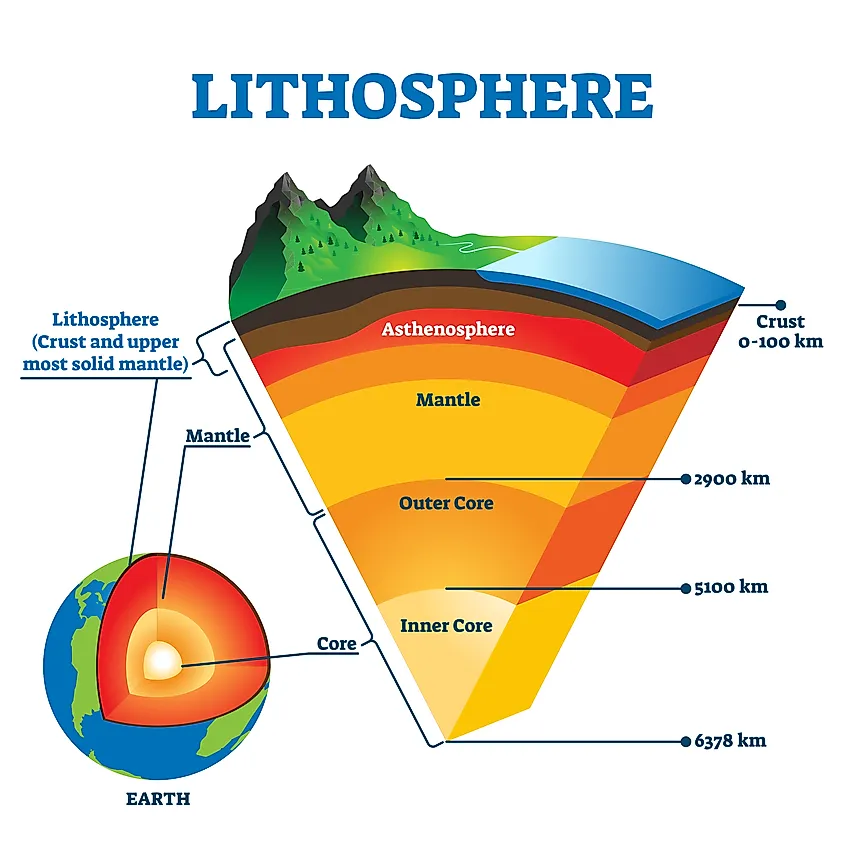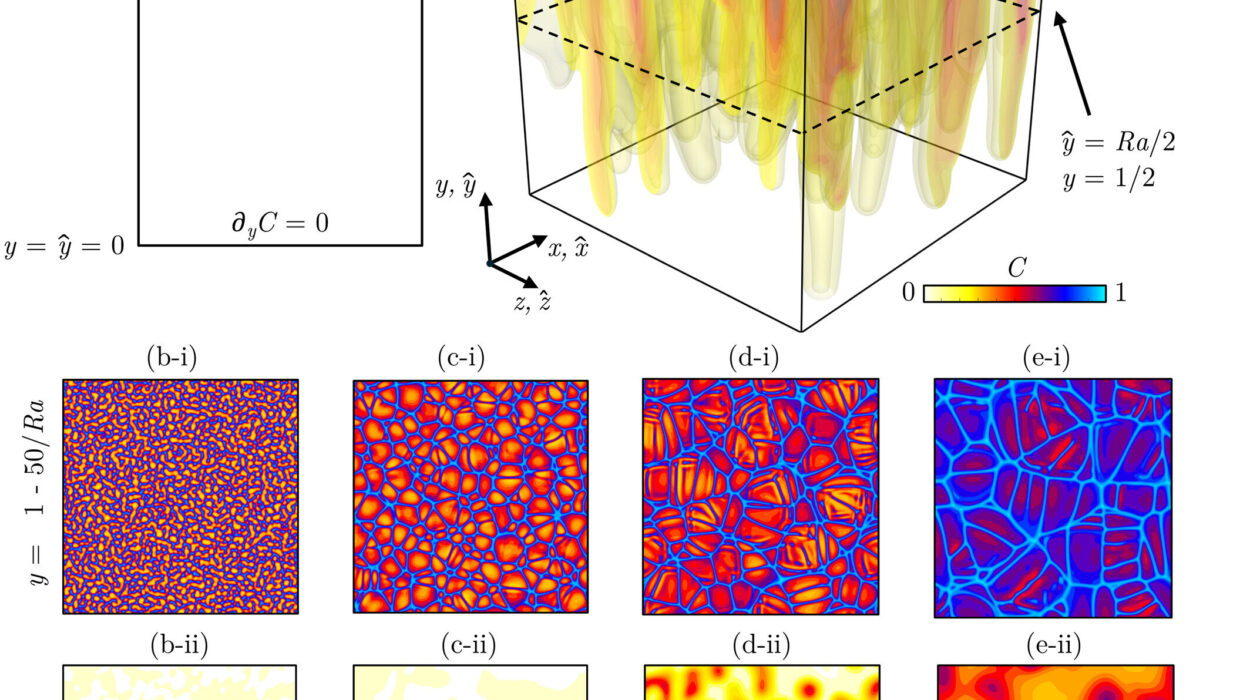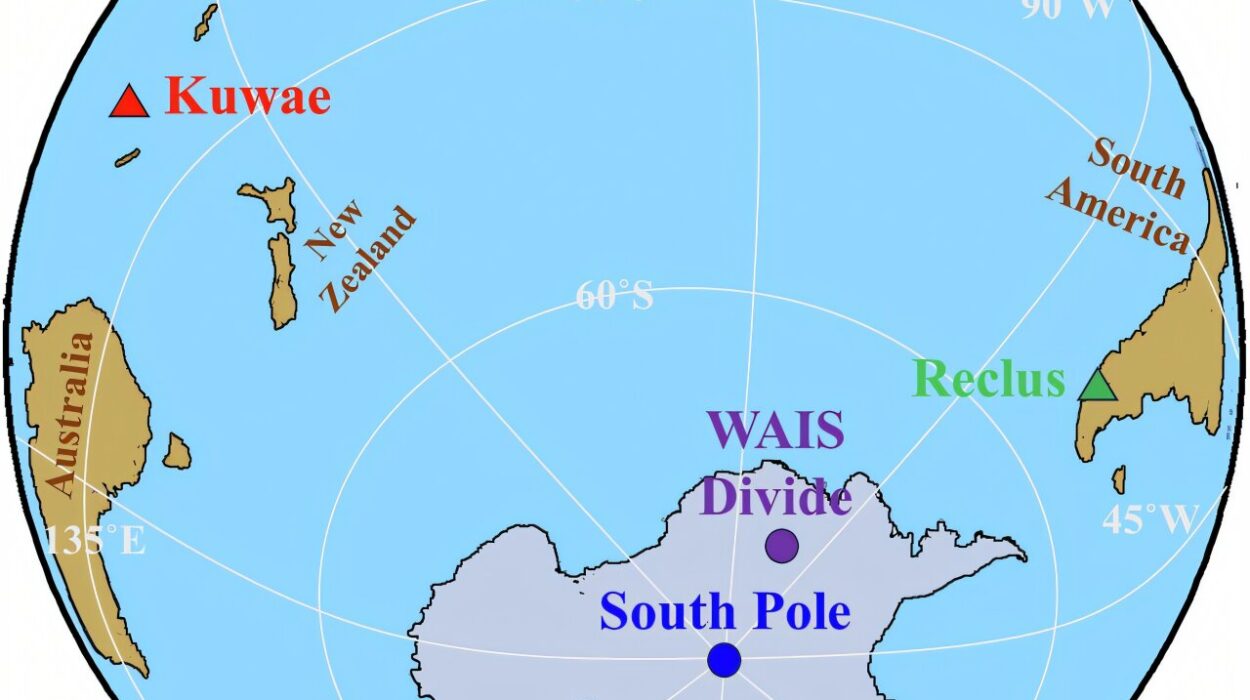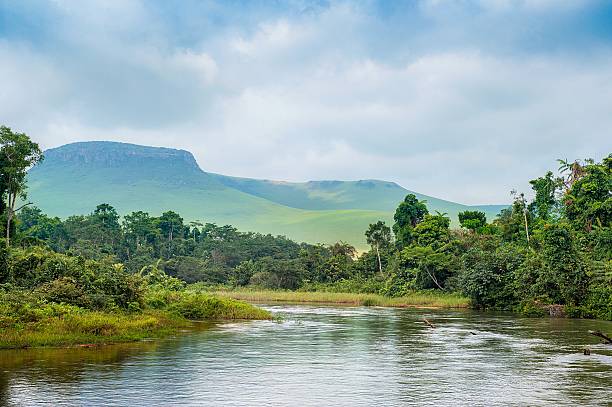Imagine standing on the edge of a jagged cliff overlooking the ocean, wind howling, salt in the air. Below your feet lies something deceptively solid—rock, unyielding and ancient. But beneath that stone crust, Earth is not still. It breathes, moves, reshapes, and reinvents itself. The ground we think of as firm is actually restless, alive in geological time. The crust and uppermost mantle together form the lithosphere—the skin of the Earth—and it plays the starring role in one of our planet’s most dramatic processes: plate tectonics.
Though it may seem lifeless and passive, the lithosphere is anything but. It is the engine of mountains, the architect of ocean basins, and the force behind both creation and destruction on a planetary scale. Without the lithosphere’s movements, the Earth would be an entirely different world—barren, static, and devoid of the rich tapestry of landscapes and life we see today.
Understanding the role of the lithosphere in plate tectonics is like peering into Earth’s diary, tracing the scars of its past and glimpsing the story of its ever-evolving surface. It is a tale written in fire, stone, and slow, magnificent motion.
The Lithosphere: Earth’s Rigid Shell
To appreciate the role the lithosphere plays, we must first understand what it is. The Earth is not a single, solid mass; it is layered like a cosmic cake. At the center lies the core, surrounded by the mantle, and finally the crust—what we live on. But geologists have found that it makes more sense to divide these layers not just by composition, but also by how they behave mechanically.
The lithosphere is the outermost mechanical layer. It includes both the crust and the very uppermost part of the mantle. What defines it is not its composition, but its rigidity. The lithosphere is cool compared to the layers below, and therefore it behaves elastically over short timescales—meaning it can bend or break—but over millions of years, it drifts like icebergs on a sea of molten rock.
Just beneath the lithosphere lies the asthenosphere, a softer, hotter, and more ductile part of the upper mantle. The contrast between the rigid lithosphere and the soft asthenosphere is crucial. It is this mechanical contrast that allows the lithospheric plates to move. Without this pliable underlayer, the lithosphere would be locked in place, and the story of plate tectonics would never have begun.
Cracked Skin: The Plates That Shape Our World
Earth’s lithosphere is not a continuous shell. Instead, it is broken into a mosaic of massive slabs called tectonic plates. Some are as small as a few hundred kilometers wide, while others, like the Pacific Plate, span thousands of kilometers. These plates fit together like pieces of a jigsaw puzzle, constantly in motion.
But their movements are not random. Driven by the heat engine within Earth, they shift, collide, diverge, and slide past each other. These motions are responsible for almost every major geological event we witness—earthquakes, volcanic eruptions, the rise of mountain ranges, and the drift of continents across time.
The boundaries between plates are zones of immense geological activity. At divergent boundaries, plates pull apart, birthing new crust. At convergent boundaries, one plate dives beneath another, triggering volcanoes and earthquakes. And at transform boundaries, plates grind against one another in seismic fury. All of this dynamic activity begins with the lithosphere.
A Journey Through Time: The Birth of Plate Tectonics
To understand how the lithosphere came to move in such a dramatic way, we must look back—far back—to a time when Earth was still forming. About 4.5 billion years ago, Earth was a molten, chaotic mass. But over time, it began to cool. The surface hardened, forming the first crust. But the heat from within never stopped rising.
This internal heat, left over from Earth’s formation and constantly replenished by radioactive decay, created convection currents in the mantle. Hot material rose, cooled, and sank, churning like water in a boiling pot. Over millions of years, this slow-moving dance began to tug at the overlying lithosphere, breaking it apart into plates.
The lithosphere, though rigid, was not immune to these forces. Cracks formed. Plates drifted. Continents wandered. Oceans opened and closed. The surface of the planet transformed from a static shell into a living, shifting map. This was the birth of plate tectonics—a theory that would only be fully understood by humans in the last century, but one that has governed Earth’s evolution for eons.
At the Edge of Creation: Where New Lithosphere Is Born
Some of the most dramatic activity involving the lithosphere occurs at mid-ocean ridges. These underwater mountain chains snake across the globe like scars on the ocean floor. They are places where the lithosphere is being born.
Here, tectonic plates are pulling apart, creating a rift through which molten rock from the mantle rises. As the magma cools, it solidifies into new lithospheric rock, pushing the older crust aside. This continuous process, called seafloor spreading, is how new oceanic crust—and therefore new lithosphere—is formed.
The Atlantic Ocean, for example, is slowly widening as the North American and Eurasian plates move apart along the Mid-Atlantic Ridge. The rate may be only a few centimeters per year—about as fast as your fingernails grow—but over millions of years, it adds up to vast changes.
Where Lithosphere Dies: The Subduction Zones
But just as the lithosphere is created, it must also be destroyed. Earth is a closed system—if new lithosphere is constantly being added at mid-ocean ridges, it must be recycled elsewhere to keep the planet in balance. This recycling occurs at subduction zones.
These are the deep oceanic trenches where one tectonic plate plunges beneath another and sinks into the mantle. It is at these fiery gravesites that oceanic lithosphere, now cold and heavy, is pulled down into Earth’s interior. As it descends, it melts and contributes to volcanic arcs, earthquakes, and the formation of mountains.
The Pacific Ring of Fire is a dramatic example—a horseshoe-shaped zone of subduction that surrounds the Pacific Ocean, marked by earthquakes, tsunamis, and towering volcanoes. It is where the lithosphere meets its end, but also where some of Earth’s most powerful forces are unleashed.
Continental Drift: The Lithosphere’s Role in Earth’s Wandering Continents
Perhaps the most striking example of the lithosphere’s motion is the drifting of continents over geological time. Once, all the continents were joined together in a supercontinent called Pangaea. But as the underlying plates shifted, Pangaea broke apart. Its pieces floated away on their respective lithospheric plates, eventually forming the continents we know today.
This continental drift was once a controversial idea, ridiculed by many scientists. But today it is a cornerstone of geology, made possible entirely by the behavior of the lithosphere. Satellite measurements now confirm that continents are still moving, their positions changing inch by inch, year by year.
It is humbling to realize that what we consider solid land is actually adrift, floating on the slow but relentless currents of Earth’s internal heat. The lithosphere, once thought to be immovable, is in fact the vehicle of Earth’s grandest journeys.
Mountains, Earthquakes, and Volcanoes: The Lithosphere’s Dramatic Expressions
The beauty and violence of Earth’s surface are directly tied to the movements of the lithosphere. When two continental plates collide, neither wants to sink. Instead, the crust buckles and rises, giving birth to mountain ranges like the Himalayas. The tallest peaks on Earth are the frozen evidence of lithospheric collision.
Earthquakes, too, are a consequence of lithospheric motion. As plates grind past each other or become locked under pressure, stress builds. When it’s finally released, the ground shakes. The cities of California, lying along the San Andreas Fault, feel this reality with unsettling frequency.
Volcanoes rise where the lithosphere is pierced or melted—whether at subduction zones or hotspots like Hawaii, where a plume of magma from deep in the mantle melts through the lithosphere like a welding torch. These are the Earth’s pressure valves, releasing the molten secrets of its interior.
A Dynamic Balance: Why the Lithosphere Matters
It is tempting to think of the lithosphere as merely the Earth’s outer shell. But it is much more than that—it is the interface where geology meets life, where deep planetary processes manifest in the environments we know. The mountains we climb, the continents we inhabit, the fertile soils that sustain our crops—all owe their existence to the restless lithosphere.
It is this balance between creation and destruction, uplift and erosion, subduction and seafloor spreading, that shapes the world. If the lithosphere did not move, life as we know it might not have evolved. Volcanic eruptions release gases that once formed the atmosphere. Mountain-building creates varied climates. Tectonic recycling maintains Earth’s magnetic field. The lithosphere is not just a geological feature—it is a foundation for biology, climate, and planetary stability.
The Future Beneath Us
What does the future hold for the lithosphere? As long as Earth continues to cool from within, as long as mantle convection churns beneath the crust, the plates will keep moving. New mountains will rise, old oceans will vanish, and continents will merge and separate in a dance that never ends.
Perhaps millions of years from now, another supercontinent will form—a Pangaea reborn. The Atlantic may close as the Pacific continues to shrink. The Himalayas, now rising, may one day crumble. And the cities of today, perched on the edges of plates, may find themselves underwater or atop towering plateaus.
The lithosphere reminds us that nothing on Earth is permanent. It humbles us with its scale and power. And yet, it also connects us—to the Earth beneath our feet, to the history of our planet, and to the deep, invisible forces that shape our world every day.






